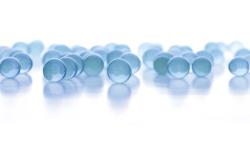
OR WAIT null SECS
- About Us
- Advertise
- Editorial Information
- Contact Us
- Do Not Sell My Personal Information
- Privacy Policy
- Terms and Conditions
© 2024 MJH Life Sciences™ and BioPharm International. All rights reserved.
Optimizing the Delivery of Cell-Culture Additives
When using media supplements in biologics, it is important to have a key understanding of both the supplement and the base medium to ensure high titer and stability.
Media supplements can be used to support or stabilize cell growth, increase concentration, and maintain cell productivity when used in cell cultures. BioPharm International spoke with Becky Moore, PhD, and Mark J. Stramaglia, RPh, MBA, Gibco, Thermo Fisher Scientific, about the importance of understanding the cell line of the biologic when adding supplements, how the physical state of the supplement can affect the base medium, and how to get the most out of the feeding process.
BioPharm When are supplements incorporated into the biologic formulation process?
Moore and Stramaglia: Simple supplementation is often incorporated earlier in the formulation process to prepare for more complex process development efforts. More complex supplementation is usually first engaged during process development between stable production cell-line development and Phase I clinical research. Complete feeding solutions extend fed-batch culture life and volumetric protein production. Media supplements encompass a range of additives from simple additions like L-glutamine to more complex additives, like FunctionMAX TiterEnhancer, used to help maintain cell productivity.
BioPharm What is the most important aspect to consider when determining if a supplement will be compatible with a medium?
Moore and Stramaglia: The cell line being used is most important. Some parental lines are more sensitive to highly concentrated feeding versus others that may be more metabolically demanding. The key is having the flexibility to deliver complete feeding supplements at various concentrations based on the needs of the cells. Options such as EfficientFeed A+, B+, and C+ provide maximum flexibility to super-concentrate nutrient delivery up to 200 g/L concentrations. Straightforward, water-only reconstitution that does not require pH adjustment is an important aspect for workflow considerations. Additionally, eliminating the need for pH adjustment and reconstitution of multiple feeds can reduce risk of errors associated with overshooting salt addition, reconstitution errors, or extreme pH handling that can impact bioreactor control.
BioPharm Is there a standard supplement that you find works best across an array of biologics?
Moore and Stramaglia: An ideal feeding supplement would provide the flexibility to deliver the optimal level of nutrient supplementation while complementing the original base medium and avoiding unneeded salt content. A part of delivering the optimal concentration is allowing super concentration to either work within the bioreactor constraints or to avoid product dilution. There are commercially available supplement options with matched catalog basal formulations that offer the flexibility needed to super-concentrate up to 3X or 200 g/L without pH adjustments that add salt content.
BioPharm How does the supplement’s physical state affect the process of inclusion into the formulation?
Moore and Stramaglia: ;Supplements are most economically shipped from vendors to end users in a dry-format state. Methods for reconstitution have an impact on the salt or osmolarity contribution to the culture. This can impact the total amount of nutrients delivered before having negative impacts on the health of cells. To deliver the most nutrient-rich components, users should choose supplements that only require water addition-no acids or base-over those requiring pH adjustments.
BioPharm How does the type of supplement, or amount added to a base medium, affect a biologic’s stability?
Moore and Stramaglia: More and more we find customers analyzing protein quality characteristics when modifying feeding strategies or supplements. To provide better total-end biologic delivery, it is important to ensure that the supplement used to gain a higher titer also hits the target product quality profile. Therefore, use of supplements shown not to impact product quality from an original state is essential. Further, the capability to modify product quality parameters in a predictable and reproducible way is becoming more important.
BioPharm Are there any advantages or disadvantages associated with using media kits?
Moore and Stramaglia: In sets of media options for finding a base medium, if a kit provides a designed group of options to help find the best composition for a new production cell line, one must test enough conditions to gain the full benefit of the kit or panel. High-throughput process development is required to understand the impact of multiple formulations, as well as process parameters. Design of experiments investigate multiple conditions in the quest to select the appropriate base and feed solutions.
Article DetailsBioPharm International
Vol. 28, No. 7
Pages: 22–23
Citation:
When referring to this article, please cite it as A. Roberts, "Optimizing the Delivery of Cell-Culture Additives," BioPharm International 28 (7) 2015.
Related Content:



